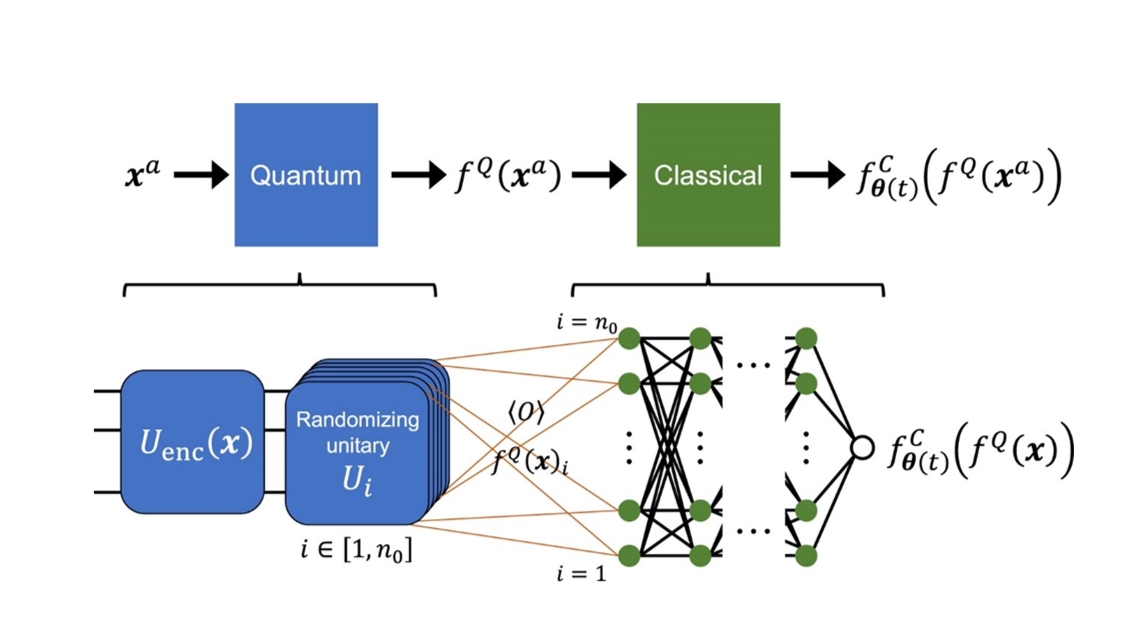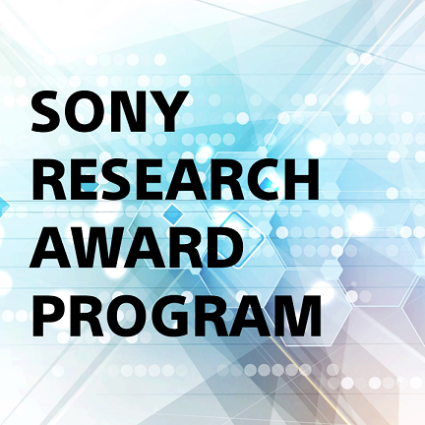In recent years, quantum neural networks (QNNs) have been receiving attention as an alternative to classical neural networks (cNNs). While QNNs have the potential to significantly increase the efficiency of data processing and learning, their practical performance is yet to be fully understood and there exists no known method of designing high-performance models. A problem of practicability also arises when model learning using a quantum computer is assumed, because its operating frequency is tens of thousands times slower than that of a classical computer.
In this paper, we propose a quantum-classical hybrid model whereby analytical design can be accomplished using the Neural Tangent Kernel (NTK) theory while efficient emulation cannot be done with a classical computer (i.e., it could offer a quantum advantage). We demonstrate its effectiveness in general machine learning tasks through numerical experiments. Moreover, separating the feature extraction part and the learning part can achieve a substantial improvement in real-time operating efficiency.
This approach is expected to be applied to the building of machine learning models as well that are being developed actively in many countries for systems that integrate a quantum computer (QC) with a high-performance computer (HPC).
In our research, we overcame the three obstacles known as critical problems in the field of quantum machine learning. The first one is the vanishing of gradients called the barren plateau problem. It is known that, when a model is built using an enormous Hilbert space, learning becomes exponentially difficult as the number of qubits increases, because of the excessively high expressive power. The second problem is the cost of learning. When the parameters of a model are learned using a gradient method, it is necessary to run a large number of quantum circuits and, therefore, the slow frequency of the quantum computer has a direct adverse effect on the computation time. First, in order to solve these problems, the proposed approach has quantum circuits dedicated to feature extraction and, in its extreme case, a structure is adopted in which quantum circuits do not have model parameters. Consolidating model parameters to the cNN part makes it possible to benefit from continued advances in model learning techniques for classical machine learning as well as from faster classical computers. The third problem is one of generalization ability. The NTK theory guarantees trainability, but not generalization ability. Moreover, the quantum kernel, which is a machine learning framework used in our research, is known to cause over-fitting when the expressibility of the kernel is too high or to induce a decline in generalization ability due to a phenomenon called vanishing similarity. For our research, therefore, we developed a machine learning model in which the output of the quantum-classical hybrid neural network becomes the non-linear transformation of projected quantum kernel (PQK), which is known to avoid over-fitting, and demonstrated both in theory and in numerical experiments that the model can support both the high expressibility of the quantum kernel and the sophisticated classical machine learning approach. In the future, it is expected that the method will be applied to more advanced learning models (e.g., diffusion models and transformers) and that demonstration experiments will be conducted in large-scale systems using industrially important data.
■ Published Paper
Quantum-classical hybrid neural networks in the neural tangent kernel regime – IOPscience



